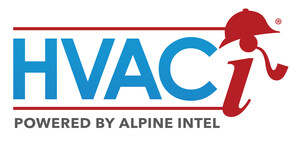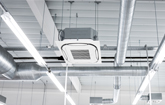Insurance Carriers and Homeowners Left With a Controversial Question to Answer About HVAC Repairs
CHARLOTTE, N.C., Feb. 9, 2012 /PRNewswire/ -- Increasingly, homeowners and insurance carriers are facing a controversial question: Should a failed R-22 HVAC unit be replaced with an entirely new R-410A system, or can it be repaired? The answer might surprise you.
In recent years, R-22 refrigerant has earned quite an infamous reputation. According to the Environmental Protection Agency (EPA), R-22 contributes to global warming and the continuing depletion of the ozone layer when leaked into the atmosphere. The potential environmental impact of R-22 (and previous refrigerants) led to the introduction of the Montreal Protocol in 1987. This act, signed by the United States and other global powers, requires participating countries to phase out their use of R-22 refrigerant by the year 2020. Rising to meet this challenge, Honeywell introduced R-410A, a substitute for its unpopular predecessor, in the mid 1990's. R-410A's introduction sparked a national debate among homeowners, insurance carriers, and HVAC contractors about when (and at what cost) R-22 systems should be replaced.
The fuel behind this debate, of course, is cost. Replacing an entire R-22 system with a "like kind and quality" (that's an insurance term) R-410A system can cost upwards of $10,000, far more than the cost of replacing a failed R-22 condensing unit. And before you consider mixing and matching R-22 and R-410A equipment, think again. R-410A systems operate at much higher pressures than R-22 equivalents, and should never, ever, be paired together to save money on HVAC repairs.
It gets worse (or at least more complicated). As of January 1, 2010, HVAC manufacturers are prohibited from producing new HVAC systems with installed "virgin" R-22 refrigerant, leading many consumers to believe that R-410A is their only choice. And many HVAC installation technicians, who stand to gain financially from the trickle-down effect of this legislation, are quick to jump on the R-410A bandwagon. It's no wonder everyone is confused - this story has more plot twists than a Dan Brown novel.
So what's the real story? Is it still possible to service and repair R-22 HVAC units? Or should we start saving up for the 5-figure HVAC system replacement bill that's bound to come in time?
For now, at least, you have a choice. In most cases, HVAC manufacturers still sell new systems that can be charged onsite with R-22 refrigerant by a qualified technician. Moreover, there's a better than average chance that your outside condensing system doesn't require a costly replacement after all (despite what your local technician may tell you). Research shows that nearly 4 out of every 5 damaged HVAC units can be brought back to "pre-loss condition" (another insurance term) with simple, straightforward repairs.
In either case, consumers can usually avoid the big price tags that accompany whole-house HVAC system replacements, or at least defer that decision until they no longer have a legal option. That's welcome news to those of us that find our wallets a little lighter than in days-gone-by.
About:
HVAC Investigators is the nation's leading provider of HVAC assessments for insurance claims. The company leverages a network of more than 500 technicians around the country to provide factual, timely reports that help insurers settle fair and fast. If you'd like more information about the company's services or to submit an assignment, please visit them online at http://www.hvacinvestigators.com or call Matt Livingston at (888) 407-5224.
This press release was issued through eReleases(R). For more information, visit eReleases Press Release Distribution at http://www.ereleases.com.
SOURCE HVAC Investigators
WANT YOUR COMPANY'S NEWS FEATURED ON PRNEWSWIRE.COM?
Newsrooms &
Influencers
Digital Media
Outlets
Journalists
Opted In





Share this article